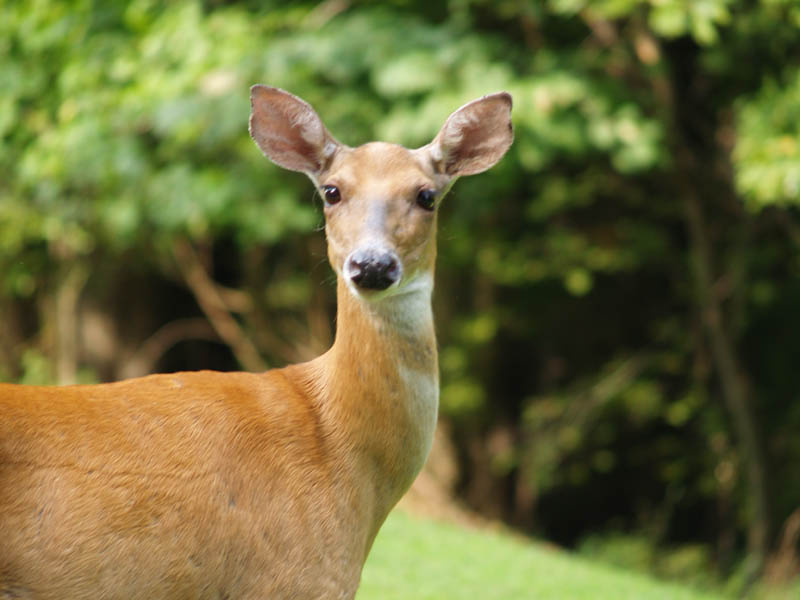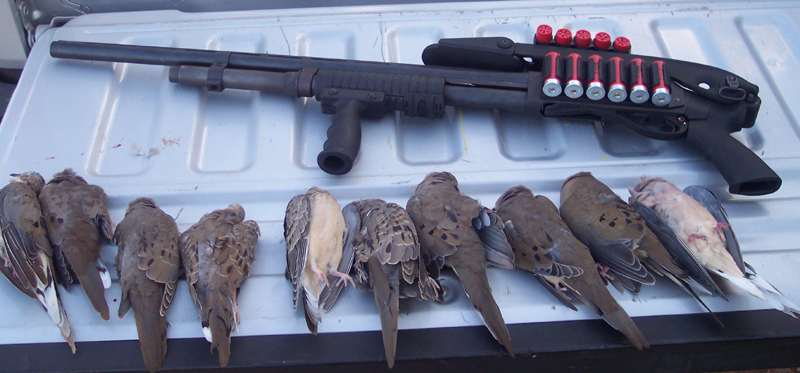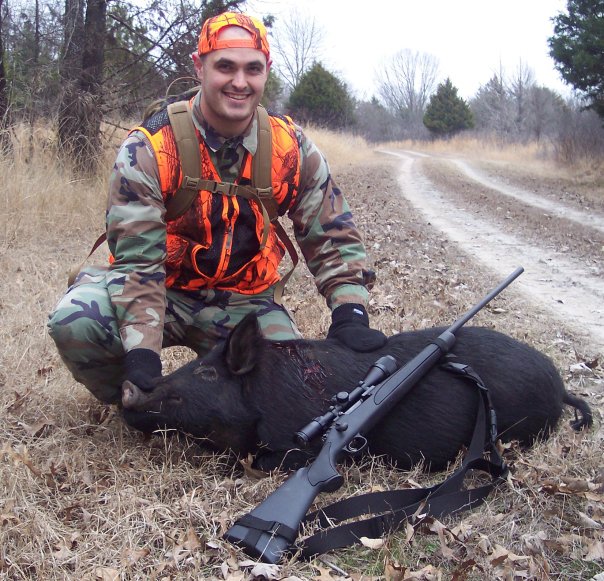
In the past, vast herds of oryx once roamed the deserts and steppes of Chad and Niger. Now the
only large herds are found in breeding programs on massive game ranches in Texas, in addition
to the smaller herds located in zoos and wildlife parks
Heads low, the two antelope emerged from the brush along a fence line. Massive horns curved up, arcing back for nearly three feet before ending in delicate and horribly sharp tips. Both antelope were white and nearly free of markings, save for a bit of burnt orange across the neck. I peered through the lens as they approached, my heart beating fast. The image was so clear through the 50mm objective that it seemed as if I could reach out and touch them.
The scimitar-horned oryx is an antelope that is native to the Sahara region of Africa. Over time their population dwindled away from habitat loss due to the deleterious effects of decades of war, as well as over hunting. For an animal that was declared officially extinct in the year 2000 these two scimitar-horned oryx seemed awfully real.
Gently I increased the pressure on my index finger. The camera shutter flickered once, twice, three times as I snapped away photographs. As much as I would have liked to be out actually hunting, it simply wasn’t possible now. For over a year a de facto ban has been in place on any killing of the scimitar-horned oryx.
In 2005 the scimitar-horned oryx, as well as the addax and the dama gazelle which were both facing similar fates, were added to the United States’ endangered species list. Normally this would have put an end to almost all hunting activity where the species were concerned, but a prior partnership between ranchers, the Exotic Wildlife Association, and local wildlife preservation organizations such as Fossil Rim Wildlife Center had already created a wildly successful breeding program. They had been working together successfully since the early 1980s to rescue all three species from extinction.
The USFWS saw the success of the breeding program and wisely allowed it, and hunting of the species on private game ranches, to continue under a special exclusion to the Endangered Species Act (ESA). This permitted ranchers to continue to profit from the hunters, each of whom pay over $5,000 for permission to kill a scimitar-horned oryx. The end result was a huge net increase in herd size, with numbers rising from only a few dozen to over 11,000 animals on Texas ranches in early 2012. The success for the Addax is even more striking: their population hit a rock-bottom low of 2, one male and one female, before rebounding to over 5,000.
From the early 1980s on through 2012, the program worked wonderfully. In the heat of summer, with the spring turkey season over and deer season not yet begun, hundreds of hunters would travel to any one of the dozens of enormous ranches that stretch for miles and miles across south and central Texas. These high-fenced operations make available dozens of exotic species, including American bison, Aoudad sheep, North American elk, and axis deer, as well as many native African species such as the scimitar-horned oryx, for anyone willing to pony up the dough. Because they are considered non-game species by the state of Texas, they are not governed by wildlife hunting regulations and can be taken at any time.
Not that a successful kill is a sure thing. Animal rights activists have long lambasted high-fenced ranches that offer hunting opportunities to anyone willing pay the thousands of dollars just to have an opportunity, calling them “canned-hunts” and worse. Nothing could be further from the truth. These ranches often take up tens of thousands of acres. Simply finding the game animal can be a challenge in itself without the help of skilled guides and ranch hands.
As they were in the wild, scimitar-horned oryx in Texas remain wily creatures adept at evading predators, including those of the two-legged variety. Dense scrub and mesquite thickets frustrate attempts at even finding the herd among the thousands of acres through which they freely roamed. These are not domesticated or even tamed animals by any stretch. Once located, getting close enough for a clean shot is delicate work. At the slightest hint of danger the herd will turn and disappear into seemingly impenetrable brush.
It was, in fact, as close as one could get to a true African wild game safari without actually leaving this continent. Some ranches even went so far as to provide large tents and decor reminiscent of safaris in the 18th and 19th century.
For a while it seemed that everything was going well. That is right up until Friends of Animals successfully sued to stop the USFWS exclusion. The animal rights organization secured a court ruling that took effect on April 4th, 2012 which effectively put a stop to all hunting activities by eliminating the exclusion that the USFWS had put in place. This in effect brought the scimitar-horned oryx, the addax, and the dama gazelle under the full protection of the ESA, even for those massive herds kept on large Texas ranches.
At the end of the day it comes down to money. Breeding programs for the scimitar-horned oryx were nearly completely funded by Texas ranchers. They made the program profitable, and part of the way they did that was by selling hunting rights. With the onerous permitting procedure required to kill any species protected by the ESA, a process which can take 16 weeks or more, and the increased regulatory inspections required of ranchers who raise such animals, it no longer made sense financially for breeding or hunting to continue.
The industry took a massive hit, and herd populations tumbled. Some ranchers increased the number of animals taken through cull hunts, both to get what profit they could before the ruling took effect, as well as to help maintain the genetic diversity of the stock. Others simply got out of the business entirely and sold the herds they had, preferring to work only with other less threatened species.
In February of 2013 Representative Steve Stockman (Republican, Texas) introduced House of Representatives Bill 576: the Save Endangered Species Act of 2013. The main point of the law is to roll back the ruling against the United States Fish and Wildlife Service (USFWS) which virtually eliminated hunting of the scimitar-horned oryx, dama gazelle, addax, and other “extinct” species in the state of Texas. The meat of Stockman’s bill states that “the Secretary of the Interior shall reissue the final rule published on September 2, 2005 (70 Fed. Reg. 52310 et seq.)” basically restoring the ability of ranchers to manage their herds and to sell trophy hunts to eager hunters.
Despite claims by animal rights activists to the contrary, breeding and hunting programs have done more to save endangered African species from outright extinction than any all other conservation efforts combined. The fees paid by hunters have allowed ranchers to create a profitable breeding industry. The vast herds they manage may one day be used to repopulate the native habitats of these endangered species, but only if they are still around in a few years.
It seems counter-intuitive to some people: the popularity of the scimitar-horned oryx, the addax, and the dama gazelle as trophy animals may be the salvation of the species. Hunters understand however. We work to conserve wetlands, deer, elk, and various other habitats with the full knowledge that it is our responsibility to both the animals and to ourselves in order to preserve our hunting traditions.
We’ve found ways to save various exotic antelope and gazelle from the brink of extinction, though whether or not these methods will continue to succeed financially remains in question. Without legislation to allow conservation solutions by private commercial interests such as high-fenced game ranches, it’s possible that these species will still face actual extinction.
Author’s Note: This article(*.pdf) originally appeared in the September 2013 issue of Western Shooting Journal.


 This is a subject I’m frequently torn over.
This is a subject I’m frequently torn over.

